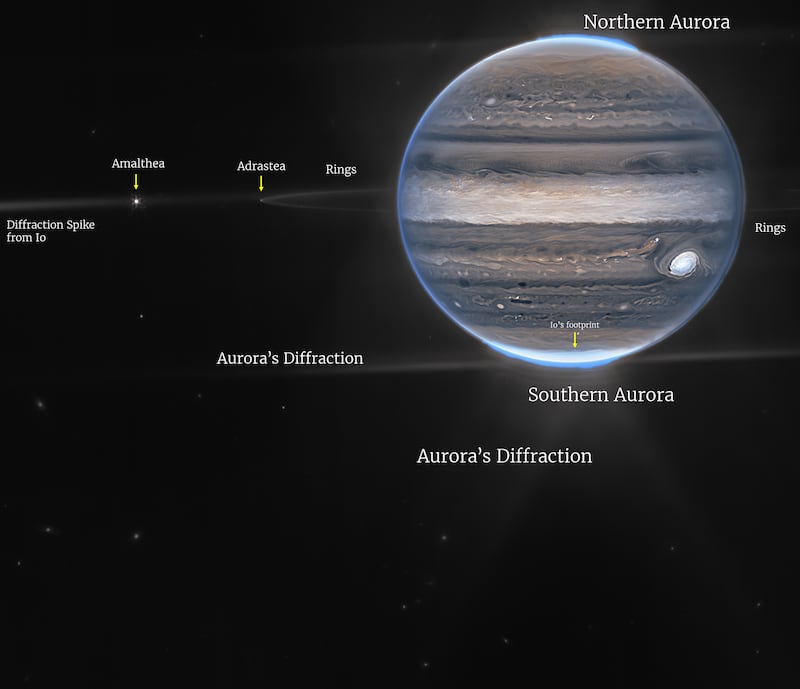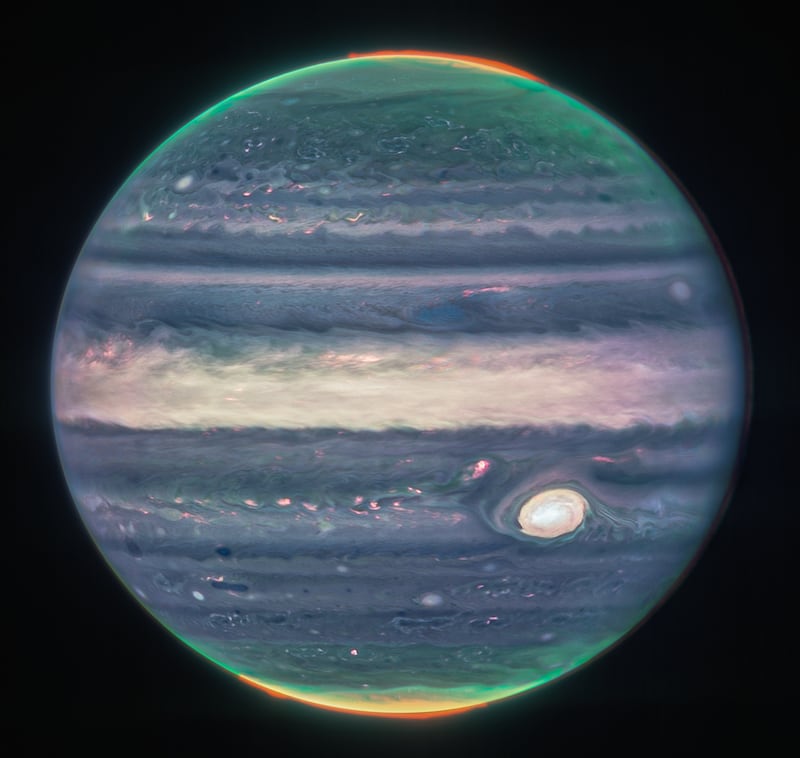Competition is fierce to take a peek through the $8.8 billion James Webb Space Telescope, so astronomer Tom Stallard feels “very lucky and very happy” to be getting a turn next month.
The British scientist has been granted 22 hours to point the telescope at Jupiter, study its upper atmosphere and gather unique images to help solve mysteries about the planets, including Earth.
Since Webb is a powerful time machine that can show scientists the earliest stars and galaxies whose light reaches Earth more than 10 billion years later, it is even rarer to turn its mirror towards “little old Jupiter”, Mr Stallard said.
Out of 249 winning proposals for Webb's second year of observation, his is the only one that focuses on a planet in our Solar System, and was approved by fellow scientists in May.
“I’m actually very surprised. Time on the James Webb telescope is almost impossible to get,” he told The National. “I'm very lucky and very happy to get the time.”
As familiar as Jupiter may be by Webb's standards, Mr Stallard expects that “we'll be seeing all sorts of weird and wacky stuff” when images are beamed back to Earth.
“James Webb is changing how astronomers see the universe in a really profound way. We are mostly as breathless as everyone else when we see this stuff come back,” he said.
Like rocket launches, turns on the telescope are timed to align with the movements of planets and satellites. In Jupiter’s case, Webb will photograph the planet right as Nasa’s Juno orbiter is taking corresponding measurements.
The date is September 7 but it is not a matter of stargazing from a window – the instructions for Webb’s instruments will have been submitted in advance, and at that point, there is “nothing we can do”, Mr Stallard said.
Images of Jupiter from the James Webb telescope – in pictures
But “profoundly wonderful” images should start coming down within hours, to be combined with the data from Juno and pored over by eager astronomers back on Earth.
The aim is to create a data set “mineable for years to come” and publish findings on Jupiter’s upper atmosphere, which loses its contents to space in a manner that is not fully understood.
Mr Stallard’s case that “there’s something weird going on with gas giants”, and understanding them better could help us get to grips with far-flung planets and whether they might be habitable, won over Webb’s selection panel.
He says there are things to learn about the Earth by studying Jupiter because the atmospheric processes are similar even though the gas giant’s magnetic field is much stronger.
Webb is the only way
The submission also rested on Mr Stallard’s argument that the Webb telescope, which was launched in 2021 and orbits the Sun, “is the only way you can do this kind of observation”.
He said Webb’s 22-hour surveillance of Jupiter was worth several nights on the Keck Observatory, a pair of ground-based telescopes 4,150 metres above sea level in Hawaii.
Planetary astronomers are lucky that people like looking at Jupiter and “we get a lot of free observations that are useful”, according to Mr Stallard. It is even possible to send spacecraft there – the European orbiter Juice is due to arrive at Jupiter in 2031 for a look at its icy moons.
But these are no substitute for the powerful Webb as a way of understanding Jupiter’s atmosphere.

“If we didn’t do it this way, there would be no way of doing it,” said Mr Stallard, who is based at Northumbria University in north-east England and is principal investigator among dozens of scientists on the project.
Webb is the successor to the Hubble Space Telescope and its instruments are more sensitive, its mirror six times larger and its orbit farther from Earth – all of which means it can see things a billion times fainter than the human eye.
This week it observed the farthest star yet detected in the universe, known as Earendel, and visible about a billion years after the Big Bang.
In a striking illustration of its impact, one physicist in Canada recently used findings from the telescope to theorise that the universe is actually 26.7 billion years old – twice as old as previously thought.
The gatekeepers to Webb’s instruments are scientists at the Space Telescope Science Institute. It invited astronomers around the world to fight over 5,000 hours of observation time in this year’s cycle.
Astronomers on Webb “never go in hoping that you’ll be completely surprised” but every observation brings something unexpected and there are sure to be unusual findings on Jupiter, Mr Stallard said.
“When you see an amazing image, it’s just as bizarre and bonkers for us.”












